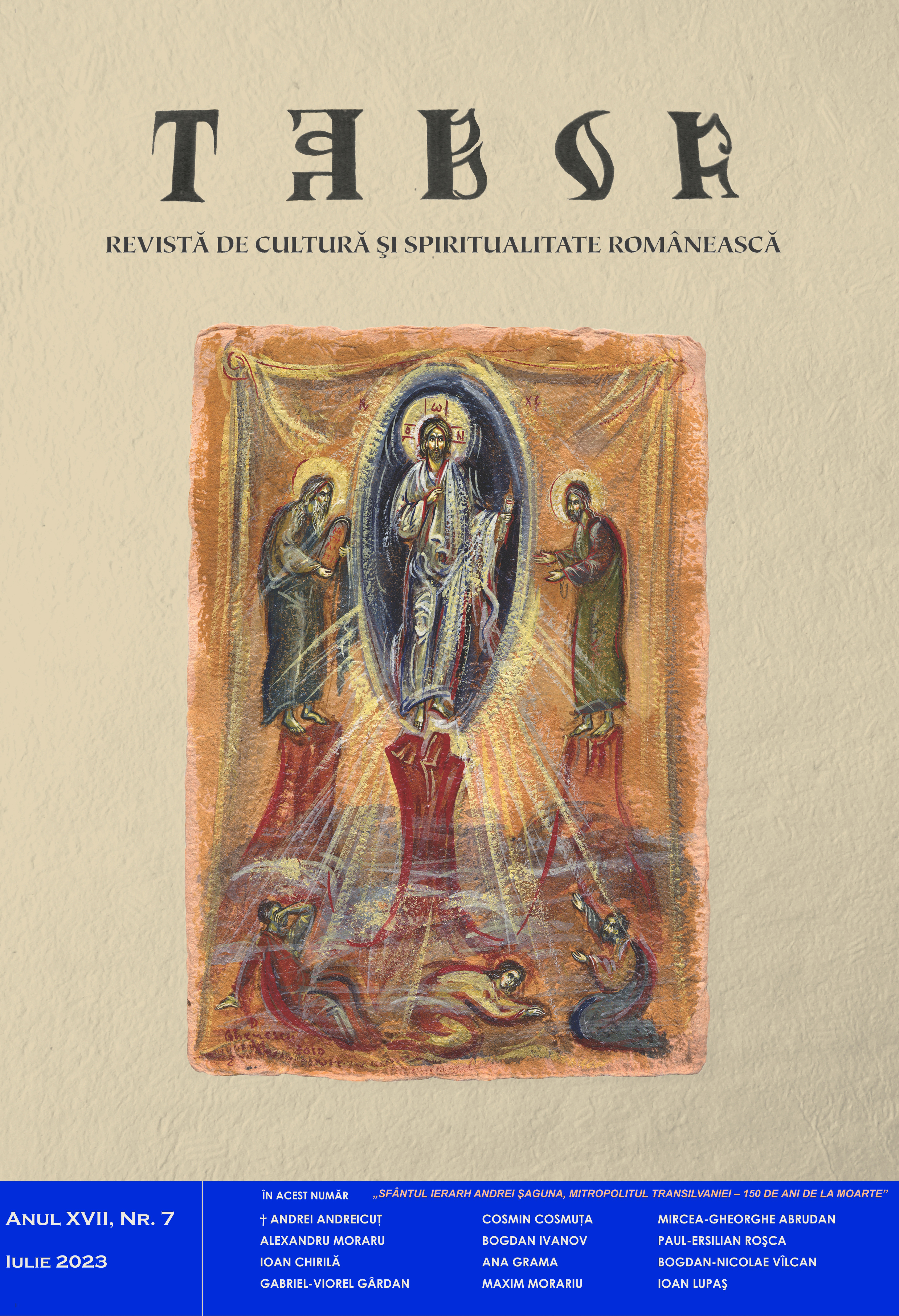Câteva realităţi bisericeşti în timpul mitropolitului Andrei Şaguna în protopopiatele Cetatea de Piatră şi Solnoc II
Some ecclesiastical realities during the time of Metropolitan Andrei Şaguna in the deaneries of Cetatea de Piatră and Solnoc II
Author(s): Cosmin CosmuţaSubject(s): History of Church(es), Pastoral Theology, Eastern Orthodoxy
Published by: Renaşterea Cluj
Keywords: Andrei Şaguna; Deanery of Solnoc II; Deanery of Cetatea de Piatră; confessional education; discipline of priests; confessional transitions;
Summary/Abstract: The period 1846-1873 was, inside the Carpathian arch, under the shepherding of the great bishop Andrei Şaguna. His activity at the head of the Romanian Orthodox Church in Transylvania and Banat coincides with the transition of the local Romanians o the stage of a nation with self-awareness, organized and embarked on the path of gaining political, national and cultural rights. The Sibiu metropolitan had an over-whelming role in this, despite the times and the opposition of the ruling elites of the dominant nations in the Habsburg Empire later the Austro-Hungarian Empire, he knew what to do and he succeeded in admirably pursuing and achieving the Romanian national aspirations. In the ecclesiastical fi eld he strove to be a good shepherd to his believers, taking into account their opinions and preferences, but at the same time being fi rm when it came to priests discipline. He sought to maintain a balance regarding the relations between the two Romanian Churches: Orthodox and United, especially in the context where confessional transitions and returns, in both directions, were frequent in the era. He supported the emancipation of Romanians through culture, striving with all his might to develop education in the Romanian language, starting in the parishes with the confessional schools for small children. The imprint of the Şagunian per-sonality was left for a long time on the Romanian nation of Transylvania and Banat, manifesting itself both on the way to the Great Union and afterwards, during the 20th century.
Journal: TABOR. Revistă de cultură şi spiritualitate românească
- Issue Year: XVII/2023
- Issue No: 07
- Page Range: 35-42
- Page Count: 8
- Language: Romanian
- Content File-PDF

